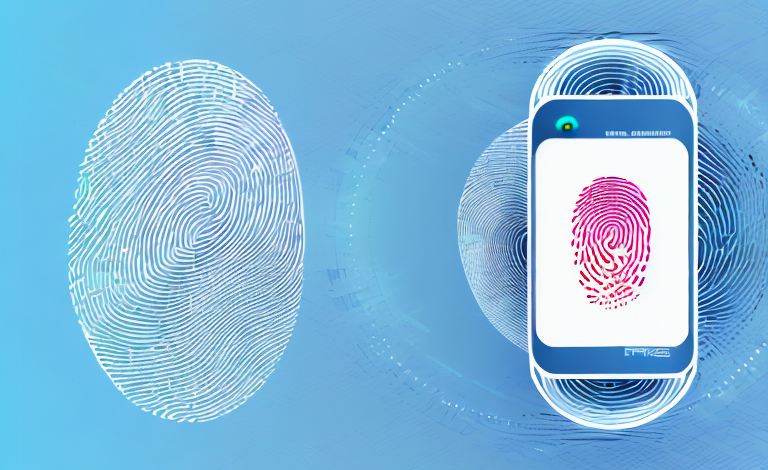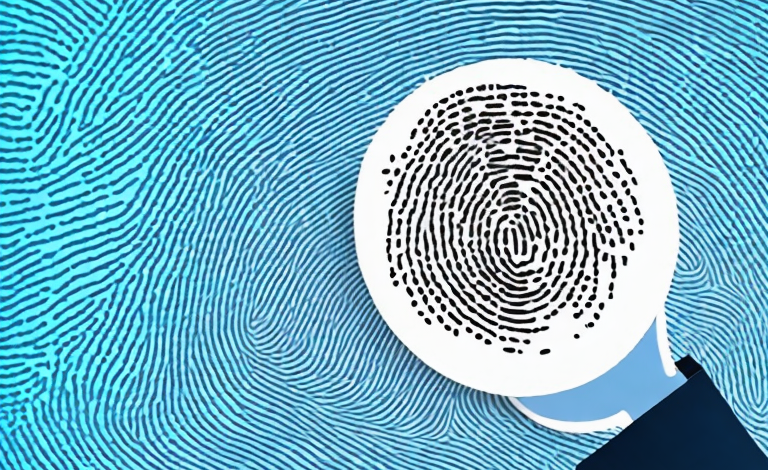In recent years, the introduction and development of biometric technology has revolutionized the way we verify our identity. One of the most famous and widely used forms of biometric technology is fingerprint scanning, but Face ID recognition has quickly gained popularity as well. As we rely more and more on these forms of authentication in our daily lives, it’s natural to wonder which one is safer. Let’s explore the science and security measures behind both technologies to get a better understanding of their pros and cons.
Introduction to Biometric Technology
Before we dive in, let’s first define what biometric technology is. Simply put, it’s a way of verifying a person’s identity through unique biological characteristics. These characteristics can include fingerprints, facial features, iris scans, and more. Biometric technology is used in a variety of industries, from law enforcement to healthcare to consumer electronics. In this article, we’ll be focusing on two of the most popular forms of biometric technology: fingerprint scanning and Face ID recognition.
One of the main advantages of biometric technology is its high level of accuracy. Unlike traditional methods of identification, such as passwords or PINs, biometric data is unique to each individual and cannot be easily replicated or stolen. This makes it a more secure option for sensitive applications, such as accessing bank accounts or government databases. However, there are also concerns about privacy and the potential misuse of biometric data, which must be carefully addressed by developers and regulators.
Understanding the Difference between Fingerprint and Face ID Technology
One of the main differences between fingerprint scanning and Face ID recognition is the way in which they capture and analyze information. Fingerprint scanners read the unique ridges and valleys of a person’s fingerprints through a sensor that captures the pattern of the print. Face ID, on the other hand, uses a front-facing camera to create a 3D map of a person’s facial features, including the depth and contours of their face. This map is then compared to the initial map created when the user first set up Face ID.
Another difference between fingerprint scanning and Face ID recognition is the level of security they provide. While both technologies are considered secure, Face ID is generally considered to be more secure than fingerprint scanning. This is because it is much harder to replicate a person’s facial features than it is to replicate their fingerprint. Additionally, Face ID requires the user to be looking directly at the device, which adds an extra layer of security.
The Pros and Cons of Fingerprint Scanning
One of the biggest advantages of fingerprint scanning is its simplicity and speed. It’s a simple and quick process to scan your fingerprint, and the technology has been around for a long time. In addition, fingerprints are unique to every person, making them an effective way to verify identity. However, there are also some potential drawbacks to fingerprint scanning. If someone were to obtain a copy of your fingerprint, either through physical or digital means, they could potentially use it to gain access to your device or sensitive information.
Another advantage of fingerprint scanning is its convenience. With fingerprint scanning, you don’t have to remember a password or PIN, which can be difficult to remember or easy to forget. Additionally, fingerprint scanning can be used for a variety of purposes, such as unlocking your phone, accessing your bank account, or even boarding a plane.
On the other hand, there are also some limitations to fingerprint scanning. For example, some people may have difficulty using fingerprint scanning due to physical disabilities or injuries. In addition, certain occupations or activities may require individuals to wear gloves or have dirty or wet hands, which can make fingerprint scanning difficult or impossible. Finally, there is also the concern of privacy and security, as fingerprints can be used to track individuals or identify them without their consent.
The Pros and Cons of Face ID Recognition
Face ID recognition has some notable advantages, including the fact that it’s contactless and doesn’t require physical interaction with a device. It’s also able to detect changes in a person’s face over time, meaning it can adapt to changes such as facial hair growth or weight gain. However, some users have raised concerns about privacy and the possibility of the technology being used for surveillance purposes. There have also been reported instances of Face ID being less reliable in certain lighting conditions or if a person is wearing a mask.
Another advantage of Face ID recognition is that it can be used for secure authentication, such as for banking or other sensitive transactions. This is because it’s difficult to replicate someone’s face, making it a more secure method of authentication than traditional passwords or PINs. Additionally, Face ID can be used to unlock multiple devices, making it a convenient option for those who use multiple Apple devices.
On the other hand, some users may find Face ID recognition to be less convenient than other methods of authentication, such as Touch ID or a traditional password. This is because it requires the user to hold the device up to their face, which can be awkward or uncomfortable in certain situations. Additionally, some users may not feel comfortable with the idea of their face being scanned and stored on a device, even if it’s for authentication purposes only.
The Science Behind Fingerprint Scanning
Fingerprint scanning technologies rely on the unique patterns of ridges and valleys present in a person’s fingerprints. These patterns are formed in the womb and remain constant throughout a person’s life, with the exception of cuts or abrasions that may alter the pattern temporarily. Fingerprint scanners use a sensor that captures these patterns and can match them against records in a database to verify a person’s identity. Some advanced fingerprint scanning technologies can also detect other factors, such as blood flow or the presence of moisture or oils on the fingertips, to make sure that the print being scanned is from a live person.
Fingerprint scanning has become a popular method of authentication due to its high level of accuracy and convenience. It is used in a variety of settings, including law enforcement, border control, and mobile devices. In addition to its security benefits, fingerprint scanning also has the potential to improve accessibility for individuals with disabilities who may have difficulty remembering passwords or using traditional authentication methods. As technology continues to advance, it is likely that fingerprint scanning will become even more widespread and integrated into our daily lives.
The Science Behind Face ID Recognition
Face ID recognition technology captures a 3D map of a person’s face through a front-facing camera. This map includes a depth-sensing feature that can detect even subtle changes in facial structure, such as the contours of cheekbones, nose, and chin. The technology also uses machine learning algorithms to continuously learn and adapt to a person’s face over time. This helps ensure that even as a person’s appearance changes, the technology can still recognize them. To enhance security, Face ID also requires a user’s attention to be directed towards the camera, meaning it won’t work if the user isn’t looking at the device directly.
One of the benefits of Face ID recognition technology is that it is more secure than traditional passcodes or fingerprint recognition. This is because a person’s face is unique and difficult to replicate, making it harder for someone to gain unauthorized access to a device. Additionally, Face ID technology is designed to prevent spoofing attempts, such as using a photograph or mask to trick the system.
Another advantage of Face ID recognition technology is that it can be used for a variety of purposes beyond unlocking a device. For example, some companies are exploring the use of Face ID for secure payments or to grant access to restricted areas. This technology could also be used in healthcare settings to verify a patient’s identity and ensure that they receive the correct treatment.
Security Measures and Authentication Protocols for Fingerprint Scanning
Recognizing the potential security risks associated with fingerprint scanning, authentication protocols have been put in place to make it more difficult for unauthorized access to occur. For example, Apple’s Touch ID technology uses a secure enclave to store fingerprint data on a device, which can only be accessed with the user’s passcode. In addition, fingerprint scanning is often used as part of a two-factor authentication process, which requires a second form of identification such as a password or security token. This adds an extra layer of security to prevent unauthorized access even if a fingerprint is compromised.
Security Measures and Authentication Protocols for Face ID Recognition
Like fingerprint scanning, Face ID recognition also utilizes secure enclave technology to store and protect data on a device. In addition, Apple states that the technology is designed so that the chance of a random person in the population being able to unlock a device with Face ID is roughly one in a million. Face ID can also be disabled or turned off remotely in the event that a device is lost or stolen.
Comparison of Accuracy and Efficiency of Fingerprint Scanning vs. Face ID Recognition
When it comes to accuracy and efficiency, both technologies have their strengths and weaknesses. Fingerprint scanners are generally considered to be more accurate and reliable than Face ID recognition, and they’re also faster to use. However, fingerprint scanning can be less effective if a person’s fingers are dirty or damaged in some way. Face ID recognition, while potentially less accurate in certain lighting conditions or if a person is wearing a mask, is able to adapt and learn over time, becoming more accurate with continued use. It’s also contactless, making it more convenient for some users.
Can Fingerprints be Replicated? Can Faces be Cloned?
While fingerprint scanning and Face ID recognition are both considered secure forms of authentication, there is always the risk of them being compromised. In the case of fingerprint scanning, someone could potentially create a copy of your fingerprint using a variety of techniques, such as lifting a print from a surface you’ve touched or using a high-resolution photograph. With Face ID recognition, there have been instances of the technology being fooled by 3D masks or models of a person’s face. However, it’s important to note that these scenarios are relatively rare and require a significant amount of effort and resources to execute.
Advancements in Biometric Technology: What’s Next?
As technology continues to evolve, we can expect to see further advancements in biometric technology. Researchers are already looking into new forms of biometric authentication, such as vein scanning and gait recognition, which may offer even greater accuracy and security. We may also see improvements to existing forms of authentication, such as increased accuracy and speed for fingerprint scanning and better performance in low-light conditions for Face ID recognition.
Conclusion: Which is Safer – Fingerprint or Face ID?
The answer to this question ultimately depends on your personal preference and priorities. Both fingerprint scanning and Face ID recognition are secure forms of authentication that have their own pros and cons. Fingerprint scanning is fast, reliable, and has been in use for many years, but it can be less effective if a person’s fingers are dirty or if someone gains access to your print. Face ID recognition is contactless and adaptive, but may be less reliable in certain lighting conditions or if a person is wearing a mask. Overall, it’s important to understand the technology behind each form of authentication and make an informed decision based on your own needs and priorities.



